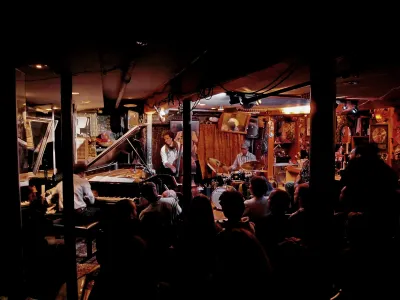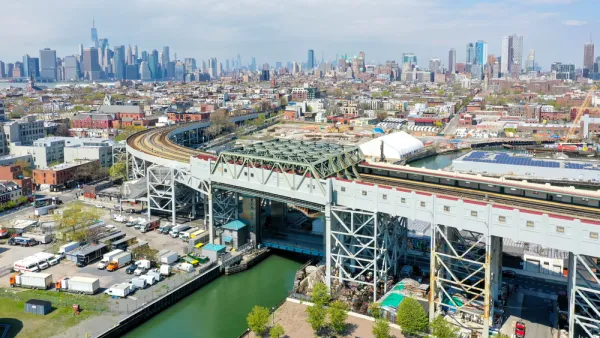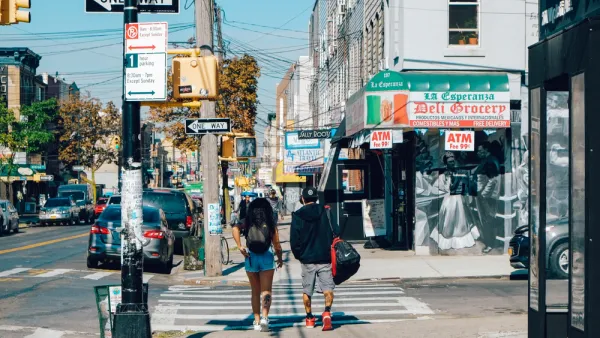A study of the musical nightlife of New York shows these spaces are an integral part of the city’s urban landscape.

A report released in September called Creative Footprint NYC takes a closer look at music venues in the city, their role in fostering community, and ways to ensure that they do not disappear.
In addition to locating the venues, the study considered the type of music the venues made available, reports Feargus O’Sullivan:
Crucially, the report doesn’t only measure venue size and location; it also develops metrics that help to assess the cultural and community value of each site. It does this by creating an “experimental output” metric that appraises the extent to which a venue provides non-mainstream alternatives to commercial offerings, and thus to what extent it broadens the city’s cultural possibilities.
Most venues are in Manhattan, but the bulk of experimental venues are in Brooklyn and Queens, according to the report. Gentrification and rising rents in these areas can threaten these alternative venues, and the consequences can run deep, O’Sullivan points out:
And when less commercial venues are forced to close, a focal point for part of the local community is lost, as is a place where some social divides are bridged. When these venues are cultural beacons for minority communities, which themselves face the threat of displacement, the potential damage to community cohesion and neighborhood identity is even greater.
Part of remedying this, says Sullivan, is understanding the value and contribution of these music venues. In addition, policies can support music venues, such as developer incentives, rent control, and easier permitting processes. “Something needs to be done to protect and nurture the city’s vitality, to prevent it from becoming a mere dormitory for the better off. That something could—indeed should—involve a more positive attitude to nightlife,” argues Sullivan.
FULL STORY: What Small, Diverse Music Venues Mean to New York City

Analysis: Cybertruck Fatality Rate Far Exceeds That of Ford Pinto
The Tesla Cybertruck was recalled seven times last year.

National Parks Layoffs Will Cause Communities to Lose Billions
Thousands of essential park workers were laid off this week, just before the busy spring break season.

Retro-silient?: America’s First “Eco-burb,” The Woodlands Turns 50
A master-planned community north of Houston offers lessons on green infrastructure and resilient design, but falls short of its founder’s lofty affordability and walkability goals.

Test News Post 1
This is a summary

Analysis: Cybertruck Fatality Rate Far Exceeds That of Ford Pinto
The Tesla Cybertruck was recalled seven times last year.

Test News Headline 46
Test for the image on the front page.
Urban Design for Planners 1: Software Tools
This six-course series explores essential urban design concepts using open source software and equips planners with the tools they need to participate fully in the urban design process.
Planning for Universal Design
Learn the tools for implementing Universal Design in planning regulations.
EMC Planning Group, Inc.
Planetizen
Planetizen
Mpact (formerly Rail~Volution)
Great Falls Development Authority, Inc.
HUDs Office of Policy Development and Research
NYU Wagner Graduate School of Public Service




























